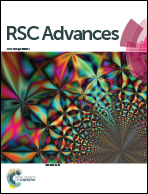Catalytic property of poly(ethylene terephthalate-co-isophthalate) synthesized with a novel Sb/Al bimetallic compound catalyst
Abstract
In this paper, the hydrolysis process of aluminum subacetate (AlSA) was studied by Fourier transform infrared (FT-IR), 27Al nuclear magnetic resonance (NMR), X-ray diffraction (XRD), and particle size distribution analysis, and poly(ethylene terephthalate-co-isophthalate) (PETI) was synthesized by using a compound catalyst made of its hydrolysate, γ-AlOOH, and ethylene glycol stibium (EGSb). Meanwhile, the effects of the γ-AlOOH addition stage on the catalytic effect and the relative properties of the polyester were investigated. The results showed that the Sb and Al compound catalyst had obvious synergistic effects on the process of the polyester polycondensation. With the same dosage of catalyst, the usage of EGSb and the polycondensation time were reduced by 60% and 18.6%, respectively, and the diethylene glycol content in the polyester also decreased by using the compound catalyst, compared with that obtained when only using the EGSb catalyst. The use of γ-AlOOH could play a catalytic role and also shows a unique crosslinking center, which could improve the melting point and glass transition temperature.



 Please wait while we load your content...
Please wait while we load your content...